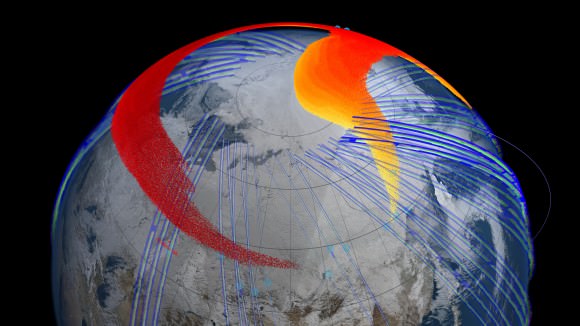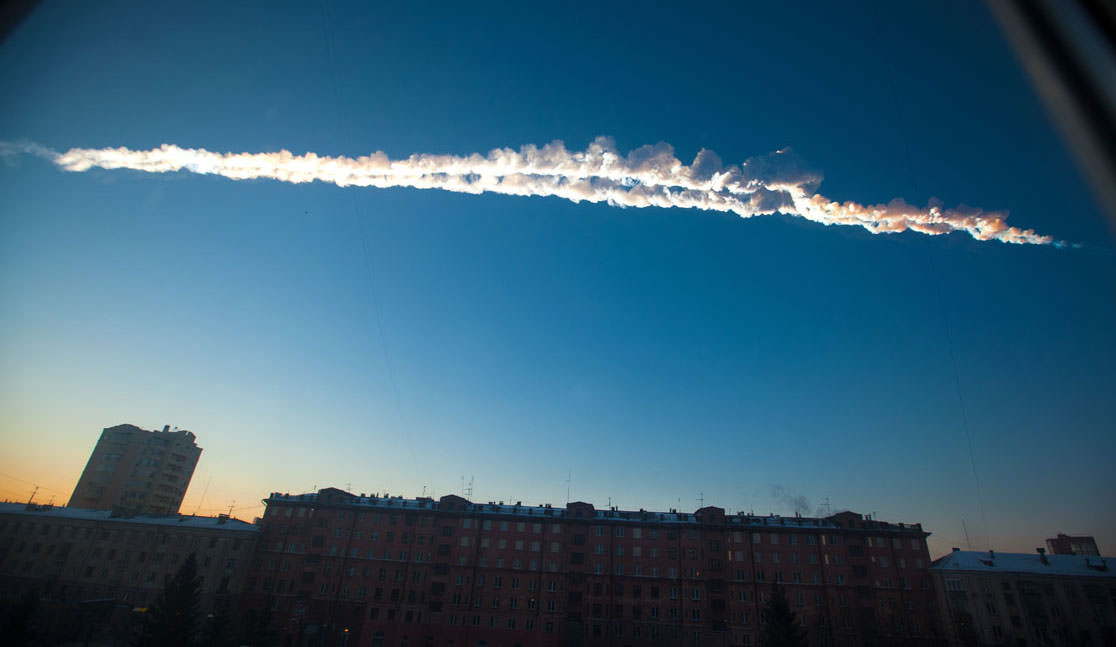A collision or “near miss” caused melting in the Chelyabinsk meteor before it slammed into Earth’s atmosphere this February, causing damage and injuries to hundreds in the remote Russian region.
A new study, presented at the Goldschmidt Conference in Florence, Italy, says some meteorite fragments’ composition shows strong evidence of heating, which is an indication of interplanetary violence of some sort.
“The meteorite which landed near Chelyabinsk is a type known as an LL5 chondrite, and it’s fairly common for these to have undergone a melting process before they fall to Earth,” stated Victor Sharygin, a researcher from the Sobolev Institute of Geology and Mineralogy in Russia.
“This almost certainly means that there was a collision between the Chelyabinsk meteorite and another body in the solar system, or a near miss with the Sun.”
Chelyabinsk’s size of 59 feet (18 meters) was by no means a very large meteor, but it was enough to cause car alarms to go off and to shatter glass when it exploded over Russia on Feb. 15. Its arrival brought the danger of space rocks once again to public attention.
In just the few short months since its arrival, a number of research studies have begun to sketch out its origins and effects. One recent NASA study showed that the cloud of dust from the explosion spread around the northern hemisphere in days.

Image Credit: NASA’s Goddard Space Flight Center Scientific Visualization
Sharygin’s team analyzed several fragments of the meteorites and put them into three groups: light, dark and intermediate. Lights ones were the most abundant. Dark fragments were most commonly found in the area where the meteorite hit the Earth.
While only three of the dark fragments show there was previous melting, the researchers say it’s quite possible that more samples might be available from the public and most notably, from the main portion that is still at the bottom of Chebarkul Lake.
“The dark fragments include a large proportion of fine-grained material, and their structure, texture and mineral composition shows they were formed by a very intensive melting process,” a press release stated.
“This material is distinct from the ‘fusion crust’ – the thin layer of material on the surface of the meteorite that melts, then solidifies, as it travels through the Earth’s atmosphere.”

Researchers also spotted “bubbles” in the dark fragments that they consider either “perfect crystals” of oxides, silicates and metal or little spots that are filled up with sulfide or metal.
They also saw platinum-type elements in the crust, which was a surprise as the time it takes for a crust to fuse is too short for platinum to form.
“We think the appearance (formation) of this platinum group mineral in the fusion crust may be linked to compositional changes in metal-sulfide liquid during remelting and oxidation processes as the meteorite came into contact with atmospheric oxygen,” Sharygin stated.
The work is ongoing, and no submission date for a study for publication was disclosed.
Source: EurekAlert!


While very interesting, the headline makes it appear as if scientists are surprised that the meteorite showed evidence of melting on atmospheric entry, instead of prior to its arrival.